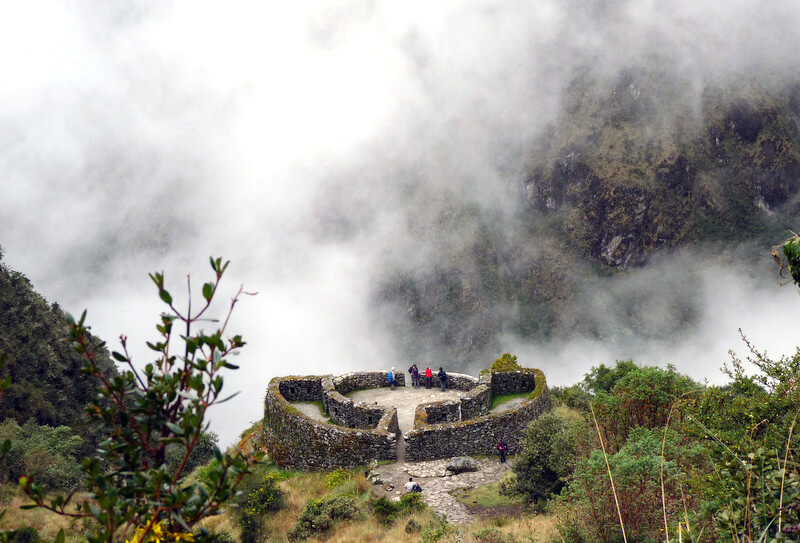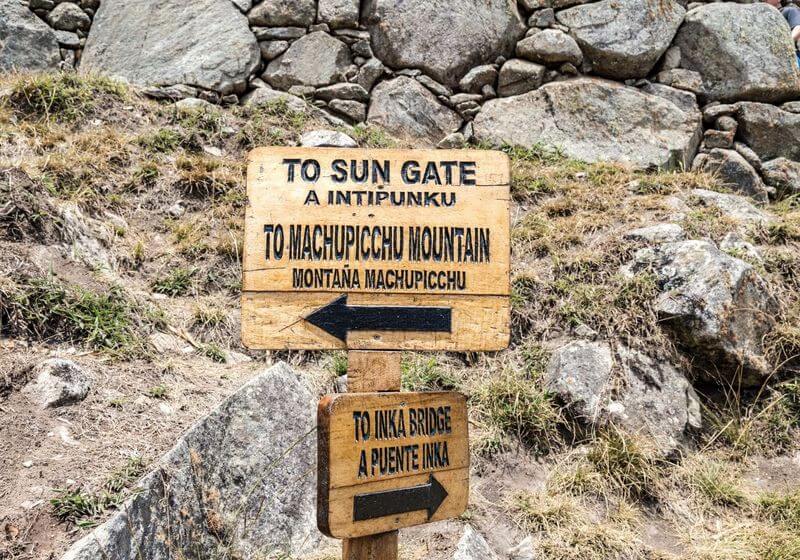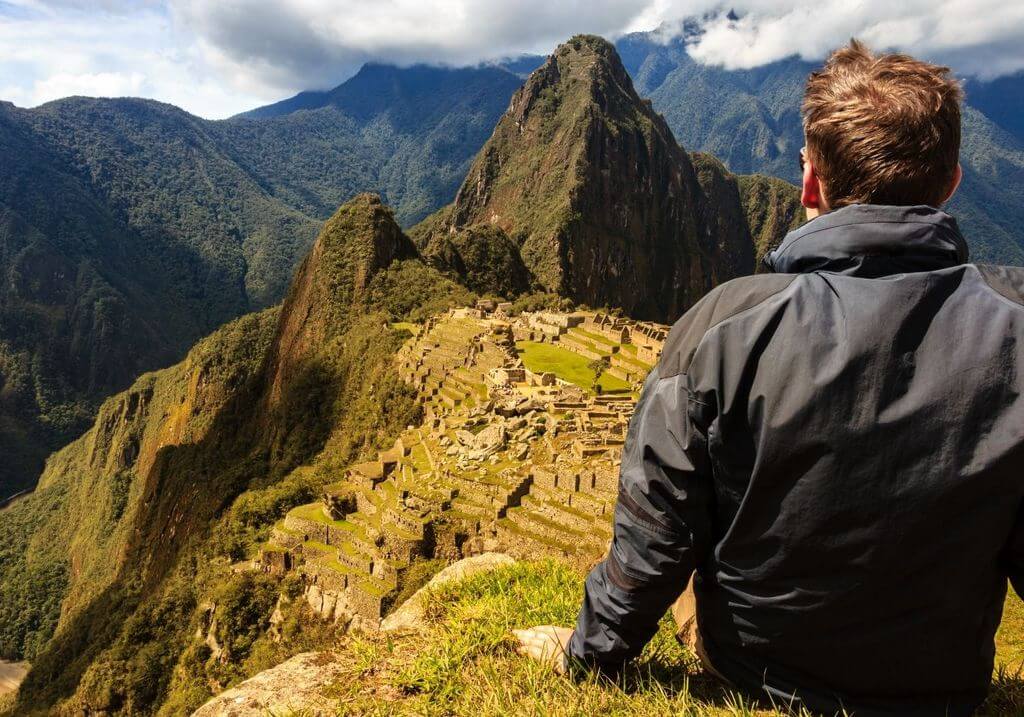One of the world’s most beloved hiking trails just so happens to end at one of the most famous wonders of the world. While many tourists take the train to the ancient Inca citadel Machu Picchu, it’s the 4-5 day hike along the world-renowned Inca Trail through the Andes that allows you to really embrace the region and its culture.
Planning this truly epic adventure requires mandatory planning and advanced booking since only 200 trekkers are allowed on the trail daily (500 total including guides and porters).
It’s also a requirement that you go with a professional guide which can be arranged by Inca Trail tour companies like cachilife.com which makes securing your necessary permits and arranging your journey a stress-free experience.
The Inca Trail’s roughly 26-mile-long trek from Cusco to Machu Picchu will introduce you to a range of different natural landscapes including clouds forests and alpine tundra, passing numerous ancient Inca ruins along the way.
Here are a few of the highlights along your journey.
Highlights of the Inca Trail, Peru
Abra de Warmiwañusca
Abra de Warmiwañusca, or Dead Woman’s Pass, may sound rather ominous, and for good reason since for many hikers this section of the trail proves to be the most challenging.
While the arduous climb to the summit of this mountain pass doesn’t regularly claim the lives of female hikers like me, it does require a bit of fitness and stamina to reach the top.
The mountain pass takes its name from the fact the peaks associated with it resemble a woman lying down and looking to the sky. The hike to the summit takes around 4-5 hours to complete and takes you to the highest point along the Inca Trail at just over 4,200 meters.
Along the way, you’ll pass several different microclimates that start out lush with orchids and waterfalls and become more barren towards the summit.
Reaching the summit will provide you with a huge sense of accomplishment and gives you the confidence that you can complete the rest of the journey since the remainder of the trail becomes much easier at lower altitudes. Machu Picchu itself is around 1,800 meters lower in elevation than Dead Woman’s Pass.
You are also rewarded with some pretty exceptional views of the valley below before making your way down from the summit and onwards towards the great Inca citadel.
Image credit: Bruce Dall (CC BY 2.0) via Flickr
Runkurakay Ruins
One of the most unique archaeological sites along the Inca Trail is the Runkurakay ruins. They are unusual in that this Inca complex is shaped like a semi-circle, almost like an amphitheatre that looks out at some pretty impressive mountains in the distance.
The rooms of the structure are also semicircular and there are trapezoidal doors. It still amazes me how they were able to gather and cut the slate and granite slabs that were used to build the site.
The ruins are found on the southern slope of Runkuraqay Mountain and were once visited by explorer Hiram Bingham III over 100 years ago, Bingham being the man who brought the existence of Machu Picchu to the outside world’s attention when he “rediscovered” the site in 1911.
The name of the ruins translate as “basket shaped” in the local Quechua language, something that seems quite fitting given their shape.
It is believed the site acted as a rest stop for Inca messengers whose job it was to relay important information regarding advancing Spanish conquistadors. Being that the site is quite remote, the only real way to see the ruins is by hiking the Inca Trail.
Image credit: karlnorling (CC BY 2.0) via Flickr
Sun Gate
Once you reach Intipinku or the Sun Gate, you are on the home stretch. It is here where you get your first glimpse of Machu Picchu, and oh what a sight it is!
The Sun Gate is positioned above Machu Picchu, giving Inca Trail hikers a breathtaking aerial view of the ancient citadel that awaits them about a 2-hour hike down the ancient stone steps built by the Inca.
Hiking the Inca Trail allows you to beat the main rush of tourists visiting Machu Picchu via buses that lead from Aguas Calientes. These tourists can witness the Sun Gate too with a regular Machu Picchu ticket, so it pays to be at the gate early as an Inca Trail hiker to be one of the first to see the city void of tourists and hopefully catch an unforgettable sun rise over Machu Picchu.
The Sun Gate is made up of staircases, terraces, and small buildings that were once heavily guarded by Inca soldiers. Only notables were allowed travel down the Sun Gate trail to enter Machu Picchu, so getting to walk this path yourself into the ancient complex is quite an honor.
Dedicated to the Sun God, the sun passes directly through the Sun Gate each year on the day of the summer solstice.
Machu Picchu
The finish line to the Inca Trail is Machu Picchu itself. Constructed in the 15th century by the Inca, it is thought to have been a royal estate which was only used for less than a century before it was abandoned.
The early Spanish explorers would never end up discovering the city, hence the incredible preservation of the site. The surrounding jungle reclaimed much of the site for centuries until it was eventually visited by Hiram Bingham III in 1911, who would then proceed to excavate the ruins a year later.
It is now believed that other Europeans had visited the site before Bingham, but it was Bingham’s expedition that brought worldwide attention to the site. Machu Picchu is now listed as a UNESCO World Heritage Site as well as one of the 7 New Wonders of the World.
The ruins consist of sacrificial altars, grand farming terraces, and many rooms. Stones weighing as much as 50 tons were used to construct the various buildings and the fine craftsmanship is quite impressive given the lack of powered tools at the time.
Some of the best stonemasonry can be found at the Temple of the Condor which has stones strategically placed to resemble a flying Andean Condor.
In addition to Machu Picchu’s impressive ruins, there are also llamas to say hi to as well as adorable rabbit-looking viscachas. If you’re not tired of hiking, you can also extend your journey to include a hike up and around Huayna Picchu which is the peak that towers over Machu Picchu in the background.
On Huyana Picchu, you’ll get another incredible aerial view of the Machu Picchu ruins and can visit the really fascinating Temple of the Moon.
Conclusion
Hiking the Inca Trail is quite literally like walking back in time. You can almost hear the footsteps of the ancient Inca that used this advanced road system centuries ago.
While you can simply take the bus to Machu Picchu or look into routes like the Salkantay Trek or Lares Trek, it is the Inca Trail which offers many of the best archaeological sites and natural vistas along the way. There is a reason why it is popular with so many travelers.
I recommend you give yourself a few days in Cusco before tackling the Inca Trail to help you acclimatize to the high elevation. And booking with a reputable tour company means you won’t have to worry much about preparing for the hike and hiring porters.
This also assures that the local Quechua people are involved and respected. Your Inca Trail tour will include an English speaking guide, entry to Machu Picchu, meals, safe drinking water, and train travel back to Cusco from Machu Picchu at the end of the trek.












